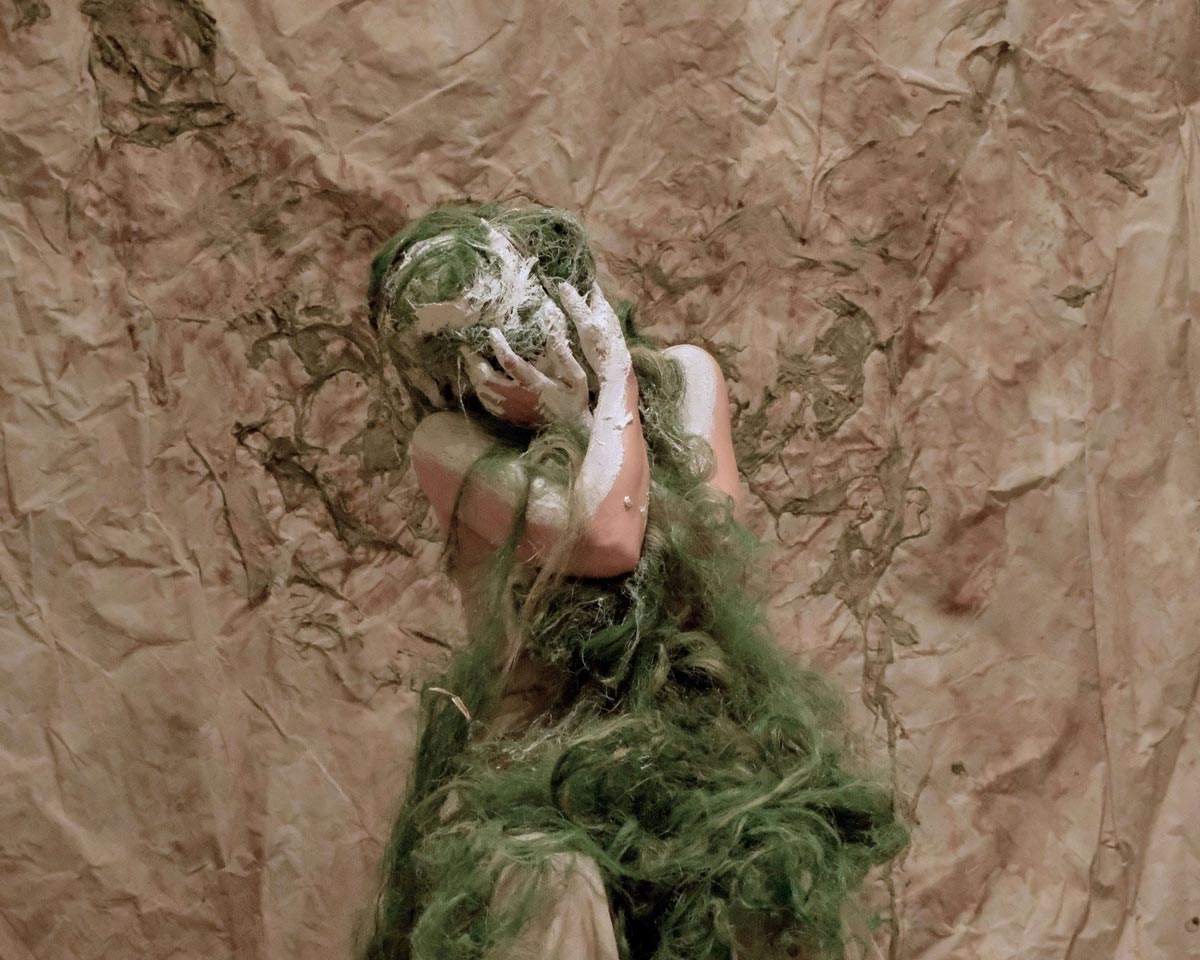An artist in symbiosis with plants: Tiziana Cera Rosco at the Botanical Garden of Palermo
Opening April 18 is the anthological exhibition of poet and artist Tiziana Cera Rosco (Milan, 1973) entitled Anthurium - Speak My Flower, curated by Maria Chiara Di Trapani, born from an artistic residency experience lived by the artist in theBotanical Garden of the University of Palermo. Presented until May 21, 2023 in two venues, at the Botanical Garden itself and the church of Saints Euno and Giuliano, a short distance from each other in the historic Kalsa district, the exhibition amplifies the dialogue that the artist and poet has always had with the places of nature and the sacred and represents the metaphor of a research work that rethinks the idea of dwelling, between nature and language, between philosophy and vision, between performance and prayer. The exhibition, sponsored by the City of Palermo, has more than 80 works: sculptures, photographs of performance acts, diaries and artist’s notebooks, videos and installations on material supports such as paper, gauze and sheets.
Without wasting material or using chemicals, the artist worked with the utmost attention to the environment and eco-sustainability, salvaging discarded organic material from the Garden itself, such as seaweed, leaves, and mud, and wearing the same long black custom-made dress with a solid fabric like protective bark throughout the residency. The artist actually inhabited the Garden for a year, day and night, transforming a small house - used as a tool shed - located in the center of the Garden, into a home of life and art. Tiziana Cera Rosco thus conducted her research by studying the plants in the living collection: observing and drying seaweed, pomegranates, anthurium, and all kinds of plant finds and transforming them into the primary material of the installations presented, four cycles of works corresponding to the seasons spent during the residency.
In the video Shipwreck, the Garden house is overflowing with sheets, a symbol of the shroud and a book that is impossible to write. In the background, a bed on which rests a pillow made of Calicantus and a blanket made of 70 gauzes sewn together. The installation Anthurium Erbario Notturno and the performance Linfa have the green hues of a spring awakening: theHerbarium consists of 490 sheets, 490 combinations of flowers made by impression of light, and a central figure of more than 5 meters resembling a face and representing the Vegetable Shroud. Persephone has the intense hues of pomegranate red waving over the yellow of the harvests in summer: pomegranate fruit beaten on a large sheet evokes something carnal. The remains of the red fruit were dried on sheets and became like hearts: vegetable votive offerings. The installation is completed with artist’s books, videos, garden finds, poetry, sculpture, and photography.
In Hades, the concluding cycle characterized by contrasts of chiaroscuro blacks illuminated by the brilliant light of gold, the artist refers to the god who bears the same name as the place he inhabits. The central theme is that of emptiness, an emptiness also traced within the brain that takes the form of a sacred butterfly. The protagonist material is gold, with which the artist intervenes on the works, including a stone, like the philosopher’s stone. The exhibition ends with a performance entitled Everything that fortifies you destroys you.
The showcases in the Tineo Room at theBotanical Garden present the research work and elements of experimentation on the perishability and resistance of plant fiber conducted by the artist, along with plant artifacts, diaries, prototypes of the works, and the large Anthurium Nocturnal Herbarium. The Church of Saints Euno and Giuliano houses the more monumental works, such as the large five-meter drapes, made with the technique of drying seaweed, or by macerating pomegranate grains, along with previously unseen videos, sculptures and small shrouds.
The exhibition is accompanied by a catalog published by Campisano Editore, with contributions by Lorenzo Chiuchiù, Laura Liberale, poets and philosophers, Luca Molinari, professor of Theory and Design of Architecture at the Second University of Campania Luigi Vanvitelli, scientific director of the M9 Museum in Mestre, former curator of the Venice Architecture Biennial, Antonio Marras, fashion designer and artist, who also spoke on the dress the artist wore during the residency by sewing up its worn parts with his red thread, Cristina Costanzo art historian, critic and curator of talks during the residency in the Orto, as well as the critical text by MariaChiara Di Trapani.
The exhibition can be visited at the Garden daily: until April 30 from 9 a.m. to 7 p.m. Monday to Saturday and 10 a.m. to 7 p.m. on Sundays, May 1 to 21 from 9 a.m. to 8 p.m. Monday to Saturday and 10 a.m. to do on Sundays. In the church visitable Monday through Friday from 10 a.m. to 1 p.m. and 3 p.m. to 6 p.m., closed Saturday and Sunday. Public info tel. 091 23891229 - www.ortobotanico.unipa.it
 |
| An artist in symbiosis with plants: Tiziana Cera Rosco at the Botanical Garden of Palermo |
Warning: the translation into English of the original Italian article was created using automatic tools. We undertake to review all articles, but we do not guarantee the total absence of inaccuracies in the translation due to the program. You can find the original by clicking on the ITA button. If you find any mistake,please contact us.



























